al-Nil Crocodile
Racial Magic
☀️Rithaldis' Body
☀️
Can convert entire body into any kind of radiant energy. This can take the form of sunlight, solar plasma and even ionizing radiation. They can maintain their natural shape or they can abandon this, reshaping themselves or merging with existing radiant energy in their environment, travel along it and reform elsewhere. They cannot be harmed by radiant energy either. Rithaldis' Body specifically allows them to merge with bright sunlight and travel along it, granting them the ability to move at the speed of light in sunny locations or places with strong radiation! This is considered the ultimate manifestation of radiant magic.
 Ithisda's Sense
Ithisda's Sense
Able to sense water in their environment or sense their environment using water, feeling anything interacting with water and sensing water in their environment despite barriers. They also cannot be harmed by water magic or naturally occuring water.

The gleaming waters of al-Nil may appear gentle and welcoming, meandering by and emanating nourishing sunlight which breathes life into otherwise desolate sands... but these glittering waters hide a vicious danger for the unwitting, home to the largest reptile of Alkelbulan: the al-Nil Crocodile! These are fearsome and imposing ambush predators possessing the ultimate radiant magic. Naturally, these crocs are the apex predator of any biome they make their home, thriving in the solar waters of al-Nil for which they are named. They tend to drown their prey, dragging them into the water with their powerful jaws and massive bodies. They are extremely lethal, killing more humans than any other crocodile. Despite this or perhaps believing they can appease their aggression, the Masryeen of Kemet associate these reptiles with the diety Sobek, creator of al-Nil and god of fertility and warfare. Yet they can also be found throughout most of the Shamsi Desert, hibernating for long periods beneath the sand until they sense the rains of the wet season dampening the soil. They prey on the influx of herbivores which migrate into the desert for these rains and enjoy the ephemeral wetlands of the season before sleeping again.
Anatomy
Original Ancestor
Nile Crocodile
Lifespan
Size
Length: 9'10"-20' (3-6.1 m)Weight: 500-2,200 lbs (225-1,000 kg)
Coloration
These crocs blend into the water, usually dark bronze on top with faded black spots or stripes. There is some variance depending where they live, those in fast flowing rivers lighter in color than those living in swamps or lakes. Their belies are usally off-yellow and their eyes are green. Young crocodiles are gray or brown with dark bands on their tail and body. In their magic form, their body will go entirely stark white with azure blue peeking between their scales.
These are four legged reptiles with short legs, a powerful tail, a scaly hide with ossified scutes and long jaws. Ithisda's Sense allows them to perceive any and all movement of water around them and their sense of hearing is also good. Their hide is well armored and thick, covered in scutes (dense keratinous plates and protrusions). They also have osteoderms (tiny bones in their skin) which act as armor on their bellies, sides and throat. Other features include the nictitating membrane which protects their eyes and lachrymal glands which clean their eyes with tears, useful for living in murky waters and sandy habitats. Their nostrils, eyes and ears are found on the top of their head, allowing them to keep the rest of their body concealed when ambushing prey. Because of the flashiness and energy consumption of their magic form, they usually only use it to blend into the radiant energy of al-Nil or only activate it once they clamp down on their prey. They might also use this in a fight or defensively to deter other large predators who they might steal from, often leaving the river to feast on carrion.
One of their most iconic features is their long, powerful jaws. They have 64-68 teeth, sharply pointed and cone-shaped for gripping prey. These can be converted into scathing, white hot plasma which breaks through any hide and may leave prey with radiation poisoning alongside their burns. If these teeth are broken or lost, they will grow back throughout most of its life. Their skulls can measure more than 26 in (65 cm) long and they have a bite force of around 5,000 psi. While they usually crawl on their bellies, they can also raise their body above the ground and gallop in a "high walk". They are capable of surprising bursts of speed, briefly running up to 8.7 mph (14 kh/hh) even without their magic but few can match their speed when using their Body manifestation. Of course they can swim far faster and maintain this speed for longer than they can on land, swimming from 19-22 mph (30-35 km/h) which is three times faster than a human can swim. Their four chamber heart is designed for high oxygination and their blood has considerable amounts of lactic acid, allowing them to remain motionless in water for up to two hours! Usually, they only dive for a few minutes at a time but can actively swim underwater for up to thirty minutes when necessary. And of course, their Body manifestation allows them to merge with the radiant energy of al-Nil which is why they make this specific river their home, extremely mobile and nearly invulnerable in this environment.
One of their most iconic features is their long, powerful jaws. They have 64-68 teeth, sharply pointed and cone-shaped for gripping prey. These can be converted into scathing, white hot plasma which breaks through any hide and may leave prey with radiation poisoning alongside their burns. If these teeth are broken or lost, they will grow back throughout most of its life. Their skulls can measure more than 26 in (65 cm) long and they have a bite force of around 5,000 psi. While they usually crawl on their bellies, they can also raise their body above the ground and gallop in a "high walk". They are capable of surprising bursts of speed, briefly running up to 8.7 mph (14 kh/hh) even without their magic but few can match their speed when using their Body manifestation. Of course they can swim far faster and maintain this speed for longer than they can on land, swimming from 19-22 mph (30-35 km/h) which is three times faster than a human can swim. Their four chamber heart is designed for high oxygination and their blood has considerable amounts of lactic acid, allowing them to remain motionless in water for up to two hours! Usually, they only dive for a few minutes at a time but can actively swim underwater for up to thirty minutes when necessary. And of course, their Body manifestation allows them to merge with the radiant energy of al-Nil which is why they make this specific river their home, extremely mobile and nearly invulnerable in this environment.
Habitat
These are freshwater crocodiles though they have been known to tolerate salty or brackish water. They live in lakes, rivers, estuaries, swamps, watering holes and marshlands within the Shamsi Desert, Dawn Ahrayn and Kemet, thriving especially within al-Nil River. In the desert, they live within permanant wadis, oases and caves or hibernate beneath dried riverbeds and floodplains until the wet season. On occassion they might be found in Arya, Kna'an or even Arabiyyan Desert or Gaarreen Ho'aa.
Diet
These are opportunistic apex predators, mostly hunting by ambush in water or feasting on carrion. They will eat any animal within their reach in water but generally avoid other large predators like lions and leopards on land. They most often feed on fish, reptiles, birds and mammals. They can wait for hours, days or even weeks for the best opportunity, nearly dormant between meals to conserve energy. They can be surprsingly agile and fasst, especially when utilizing their light magic, waiting for prey to approach the water to drink and lunging with a powerful bite and sharp teeth designed to grip and hold. They can maintain this powerful bite for long periods, usually dragging prey underwater to drown them. They are unperturbed by even the most radioactive of water deep within al-Nil and are even able to merge with these energies instead, imperceptable until lunging out of the water.
Despite their ability to chase prey, they almost always prefer to ambush and drown, their success determined by whether or not they can grab their prey quickly enough. Despite their size, their stomachs are very small so they are not voracious eaters. They will mainly eat aquatic prey or ambush those coming to the water to drink or cross. They are especially active in the rainy season when thousands of herbivores will migrate into the desert. They keep most of their body submerged, only their eyes and nostrils above the surface, swimming quietly once deciding on its target or even using their Body manifestation in al-Nil to blend into the water, attacking suddenly and unpredictably. Their teeth are designed to sink deep into prey and hold them, their immense bite force ensuring the prey cannot escape their grip. It will then try to drag prey into the water to drown them, most prey doomed once pulled into the water. They might also utilize violent thrashes and sometimes may rely on the help of other crocodiles to tear the body apart. This is another useful utility of their plasma teeth, helpful for shredding flesh.
Younger or smaller crocodiles may use their bodies and tails to flush a school of fish towards the bank, gobbling them up with sideways gulps and some crocs will even use their powerful tails to sweep terrestrial prey off their feet! Surprisingly social for such aggressive species, it isn't uncommon for these crocs to cooperate when hunting. Some will block fish by shaping their body into a semi-circle across the river or boil the water by converting their scutes into plastma. However, doing so eats up a lot of energy. When feeding in groups, the largest crocodile eats first. At times, they may scavenge carrion or steal kills from lions and leopards or they might share the carcass of a dead hippopotamous with others of their kind. When they feed, they will usually tear off pieces of their prey and swallow chunks of flesh. They might even perform death rolls to tear bodies apart and are known to swallow stones to help digest their food.
Despite their ability to chase prey, they almost always prefer to ambush and drown, their success determined by whether or not they can grab their prey quickly enough. Despite their size, their stomachs are very small so they are not voracious eaters. They will mainly eat aquatic prey or ambush those coming to the water to drink or cross. They are especially active in the rainy season when thousands of herbivores will migrate into the desert. They keep most of their body submerged, only their eyes and nostrils above the surface, swimming quietly once deciding on its target or even using their Body manifestation in al-Nil to blend into the water, attacking suddenly and unpredictably. Their teeth are designed to sink deep into prey and hold them, their immense bite force ensuring the prey cannot escape their grip. It will then try to drag prey into the water to drown them, most prey doomed once pulled into the water. They might also utilize violent thrashes and sometimes may rely on the help of other crocodiles to tear the body apart. This is another useful utility of their plasma teeth, helpful for shredding flesh.
Younger or smaller crocodiles may use their bodies and tails to flush a school of fish towards the bank, gobbling them up with sideways gulps and some crocs will even use their powerful tails to sweep terrestrial prey off their feet! Surprisingly social for such aggressive species, it isn't uncommon for these crocs to cooperate when hunting. Some will block fish by shaping their body into a semi-circle across the river or boil the water by converting their scutes into plastma. However, doing so eats up a lot of energy. When feeding in groups, the largest crocodile eats first. At times, they may scavenge carrion or steal kills from lions and leopards or they might share the carcass of a dead hippopotamous with others of their kind. When they feed, they will usually tear off pieces of their prey and swallow chunks of flesh. They might even perform death rolls to tear bodies apart and are known to swallow stones to help digest their food.
Life Cycle
These are an egg laying species and are infamously protective of their offspring. While parents don't feed hatchlings, they will protect them, even carrying hatchlings on their backs and in their mouths. Crocodiles are sexually mature around 12-16 years old, most males becoming sexually mature once they reach 10'10" (3.2 m) in length or when they reach 342lbs (155 kg). Females will lay 25 to 95 eggs, depending on her size. Females only nest and breed every two to three years while males breed every year. Males attract females by making bellowing sounds and slapping their snouts against the water. They might also blow water out of their noses. Territorial clashes over mating are horribly violent, mostly occurring when males are the same size. These brutal fights often end with mortality. When a pair finds each other, they will warble and rub their lower jaws together before mating. A male will likely mate with several females within his claimed territory but their are instances of monogomous pairs too.
Eggs are lain after one to two months, nesting during dry seasons to avoid flooding. They nest along sandy shores or riverbanks, the female digging a shallow hole a small distance from the bank under direct sunlight. After laying her eggs, she will pack sand or earth back over the nest. She devotedly guards her nest for the next three months, not departing even to eat as her eggs are heavily targetted by other predators. She will only leave to thermoregulate, needing to cool her body in the water or shade, which is when most eggs are eaten. She may even enter a trance like state while guarding her nest, not responding even if rocks are thrown at her, but she will react violently if approached. Even the father of the eggs may attack those approaching the nest, usually nearby in the water. al-Nil crocs will frequently nest gregariously, nests lying closely together. Sites with more than 17-24 nests within an area of 25x22 yd have been seen. However, it is unwise to approach these nesting sites as the females can be extremely unpredictable while guarding their eggs.
The eggs incubate for nearly 90 days and their sex is determined by temperature. If the nest is below 89 F or above 94 F, they will be females and males are only hatched between these temperatures. They will chirp before hatching, signalling their mother to uncover the nest. She may even pick up and roll the eggs between her tongue and palate to help crack the shell for her hatchlings. Hatchlings are about 11-12 in (280-300 mm) and weigh 2.5 oz (70 g), growing around that length every year for the first few years. Their mother will protect them for up to two years, carrying them in her mouth, her gular fold (a throat pouch) or even on her back. They are heavily preyed upon, very few making it into adulthood. The hatchlings are very shy and evasive, not often seen and usually nocturnal. They hunt on their own, finding insects on land and rely on their Body manifestation to protect themselves by converting their scales and scutes into plasma. Unfortunately, hatchlings cannot maintain this form for very long. By two years they are usually 3'11" (1.2 m) and will depart their nest, avoiding older crocodiles and usually spending time with others of their size. They don't join larger groups until they are at least 6'7" (2 m), subject to cannabalism from larger crocs.
Eggs are lain after one to two months, nesting during dry seasons to avoid flooding. They nest along sandy shores or riverbanks, the female digging a shallow hole a small distance from the bank under direct sunlight. After laying her eggs, she will pack sand or earth back over the nest. She devotedly guards her nest for the next three months, not departing even to eat as her eggs are heavily targetted by other predators. She will only leave to thermoregulate, needing to cool her body in the water or shade, which is when most eggs are eaten. She may even enter a trance like state while guarding her nest, not responding even if rocks are thrown at her, but she will react violently if approached. Even the father of the eggs may attack those approaching the nest, usually nearby in the water. al-Nil crocs will frequently nest gregariously, nests lying closely together. Sites with more than 17-24 nests within an area of 25x22 yd have been seen. However, it is unwise to approach these nesting sites as the females can be extremely unpredictable while guarding their eggs.
The eggs incubate for nearly 90 days and their sex is determined by temperature. If the nest is below 89 F or above 94 F, they will be females and males are only hatched between these temperatures. They will chirp before hatching, signalling their mother to uncover the nest. She may even pick up and roll the eggs between her tongue and palate to help crack the shell for her hatchlings. Hatchlings are about 11-12 in (280-300 mm) and weigh 2.5 oz (70 g), growing around that length every year for the first few years. Their mother will protect them for up to two years, carrying them in her mouth, her gular fold (a throat pouch) or even on her back. They are heavily preyed upon, very few making it into adulthood. The hatchlings are very shy and evasive, not often seen and usually nocturnal. They hunt on their own, finding insects on land and rely on their Body manifestation to protect themselves by converting their scales and scutes into plasma. Unfortunately, hatchlings cannot maintain this form for very long. By two years they are usually 3'11" (1.2 m) and will depart their nest, avoiding older crocodiles and usually spending time with others of their size. They don't join larger groups until they are at least 6'7" (2 m), subject to cannabalism from larger crocs.
Behavior
Despite their considerable aggression, al-Nil Crocodiles are actually a social species! They share basking spots, nests and even hunt together. This is possible thanks to their strict hierarchy determined by size. Larger and older males are at the top and have first access to food, mating and basking spots. They are unlikely to disrespect this order because consequences are horribly violent and fatal, smaller crocs even subject to being cannibalized. al-Nil crocs are highly inert as well, most of their time spent basking or even hibernating. A common sight along the banks of al-Nil are rows of crocodiles basking with the jaws ajar to keep them cool. However, one shouldn't mistake them as harmless in this state. They are highly aware of their surroundings, especially to the presence of other animals or anything moving in the water. When they feel threatened, especially on dry land, they will convert their entire body into radiant energy with their teeth, scales and scutes comprised of intense solar plasma. They are extremely dangerous and mobile in this form, moving at the speed of light and inflicting horrific damage! However, like most crocodiles they need a moist environment. In dry places like the Shamsi Desert, they will dig and rest deep below the sand. Their tunnels usually reach to 3'11"-5'11" (1.2-1.8 m) but they are capable of making burrows of up to 12' (3.65 m) deep. They do so in order to aestivate (hibernate) when their environment grows too arid, the deeper sand far more damp.
Mythology
A wide array of symbolism is tied to these creatures including fertility, power, strength, pharaonic sovreignty, military prowess, divine protection, violence, unpredictability, virility and ferocity. Feared and respected by all peoples of the Shamsi Desert, Dawn Ahrayn and Kemet, they are seen as a sacred animal of al-Nil. They are most associated to the deity Sobek, or just Sbk, suitably possessing the head of a crocodile. Sobek is believed to be a creator god, emerging from dark waters and bringing order to the world as well as creating al-Nil River. This is an aggressive deity with a vicious reputation suitable for a crocodile but he is also seen as a powerful symbol of fertility and protection if not healing. As a mother crocodile carries and protects their young, so too do they believe Sobek protects the Masryeen people.
Sobek is believed to ward off evil and defend the innocent. Mummified crocodiles and eggs are often offered up in his temples. There is one particular oases in Kemet which worships and reveres Sobek. They keep live crocodiles in their temples which are beleived to be living incarnations of Sobek. These crocodiles have their own feeding grounds, bodyguards and even attendants! They do so to appease their unpredictable god though the Kingdom of Accia is uncertain of which Aspect, Aethid or Erlithmanil this deity is associated with. These creatures have a clear connection to Rithaldis but Sobek is also beastly and associated with water. It is at least clear that Lithmor admired these beasts too, respecting their strength enough to grant them her ultimate radiant blessing!
Sobek is believed to ward off evil and defend the innocent. Mummified crocodiles and eggs are often offered up in his temples. There is one particular oases in Kemet which worships and reveres Sobek. They keep live crocodiles in their temples which are beleived to be living incarnations of Sobek. These crocodiles have their own feeding grounds, bodyguards and even attendants! They do so to appease their unpredictable god though the Kingdom of Accia is uncertain of which Aspect, Aethid or Erlithmanil this deity is associated with. These creatures have a clear connection to Rithaldis but Sobek is also beastly and associated with water. It is at least clear that Lithmor admired these beasts too, respecting their strength enough to grant them her ultimate radiant blessing!

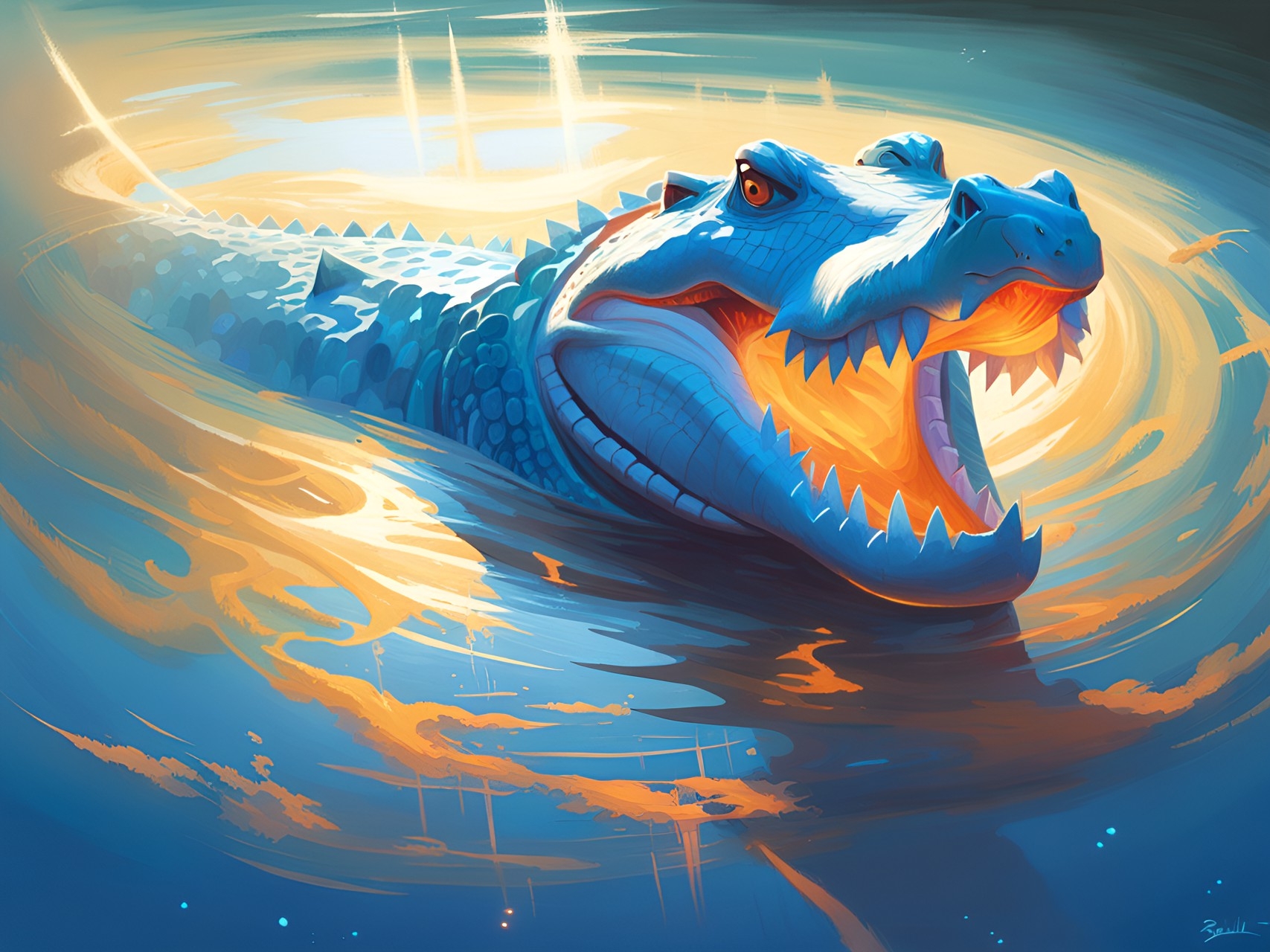
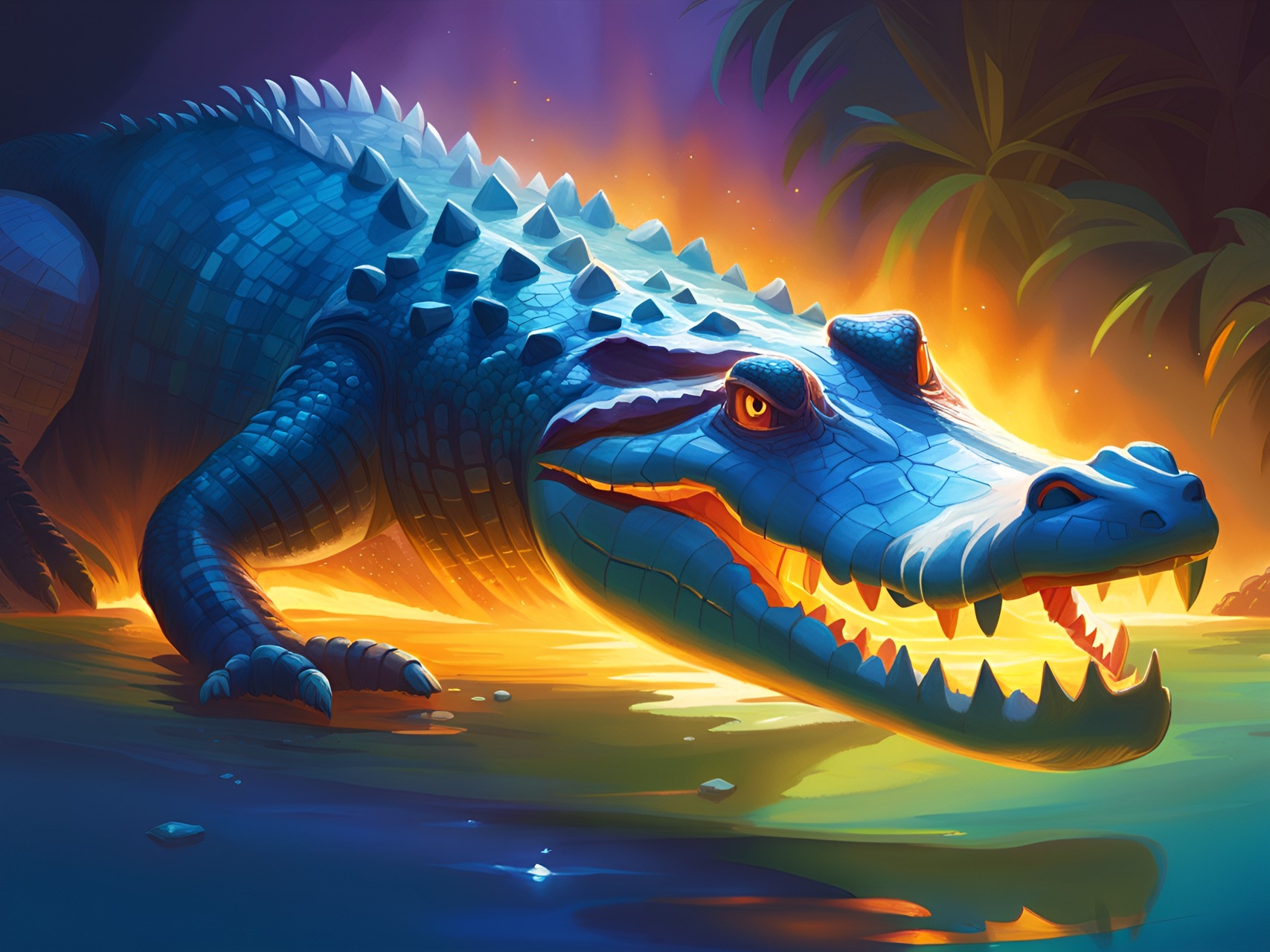
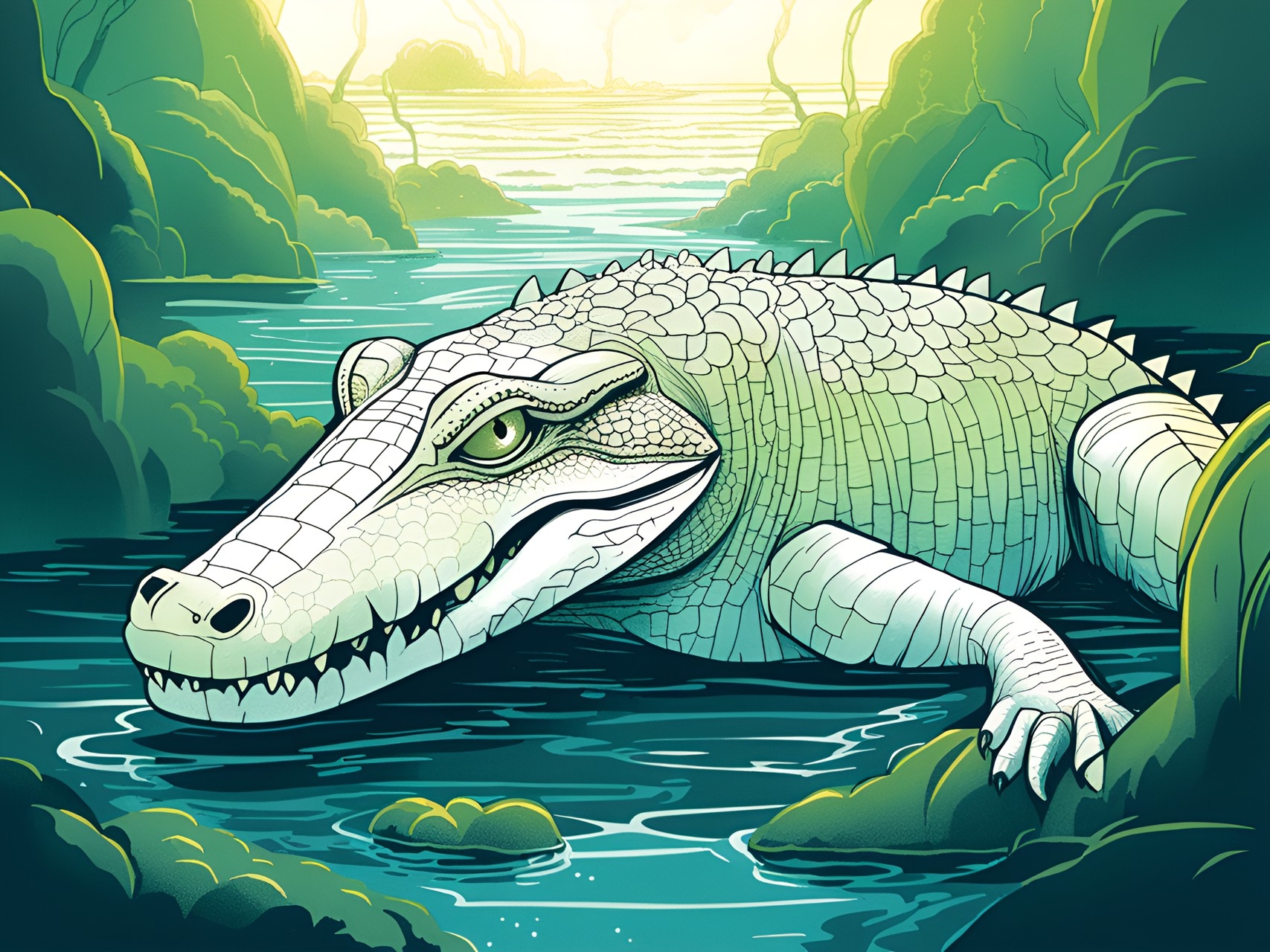
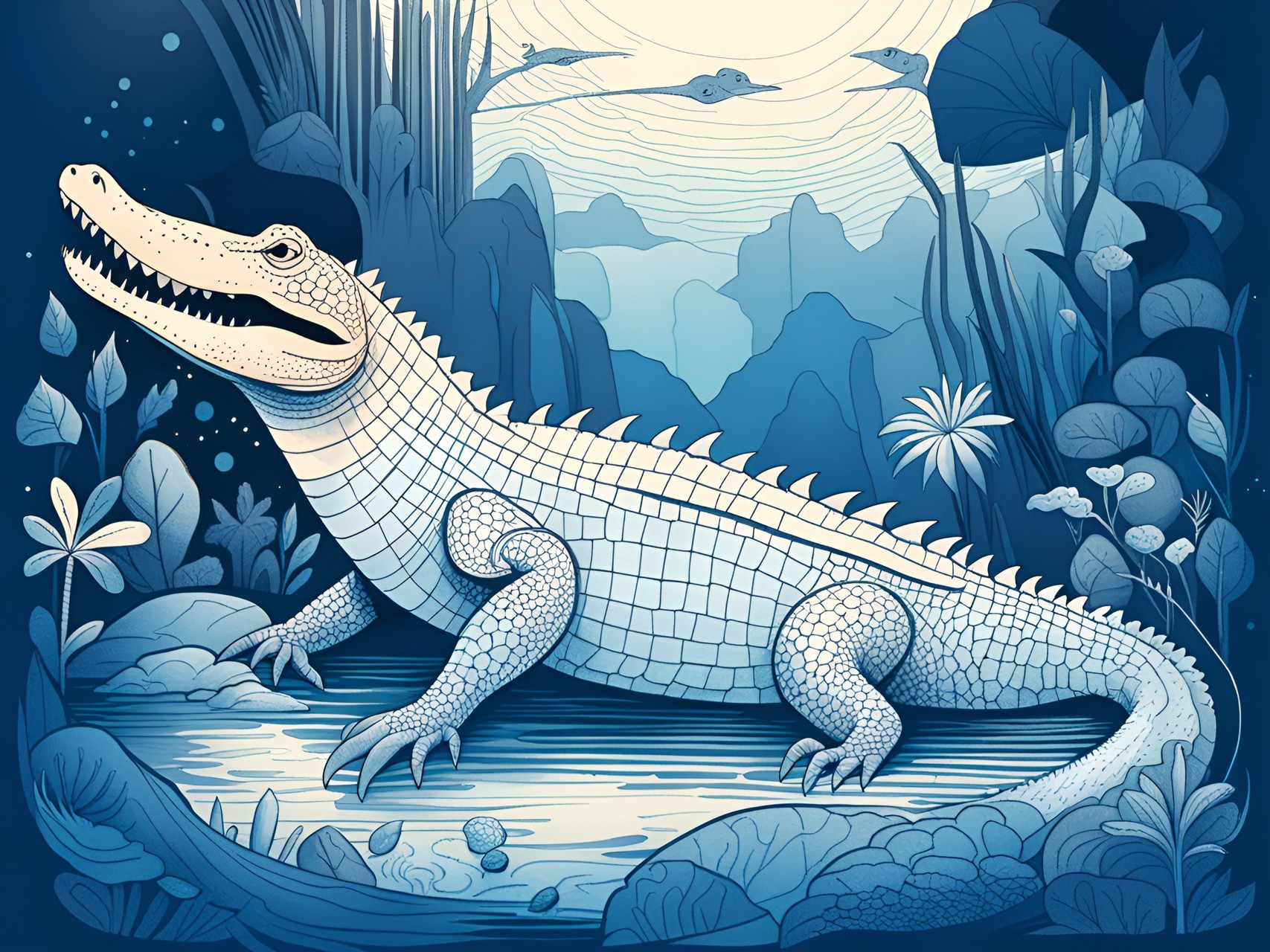
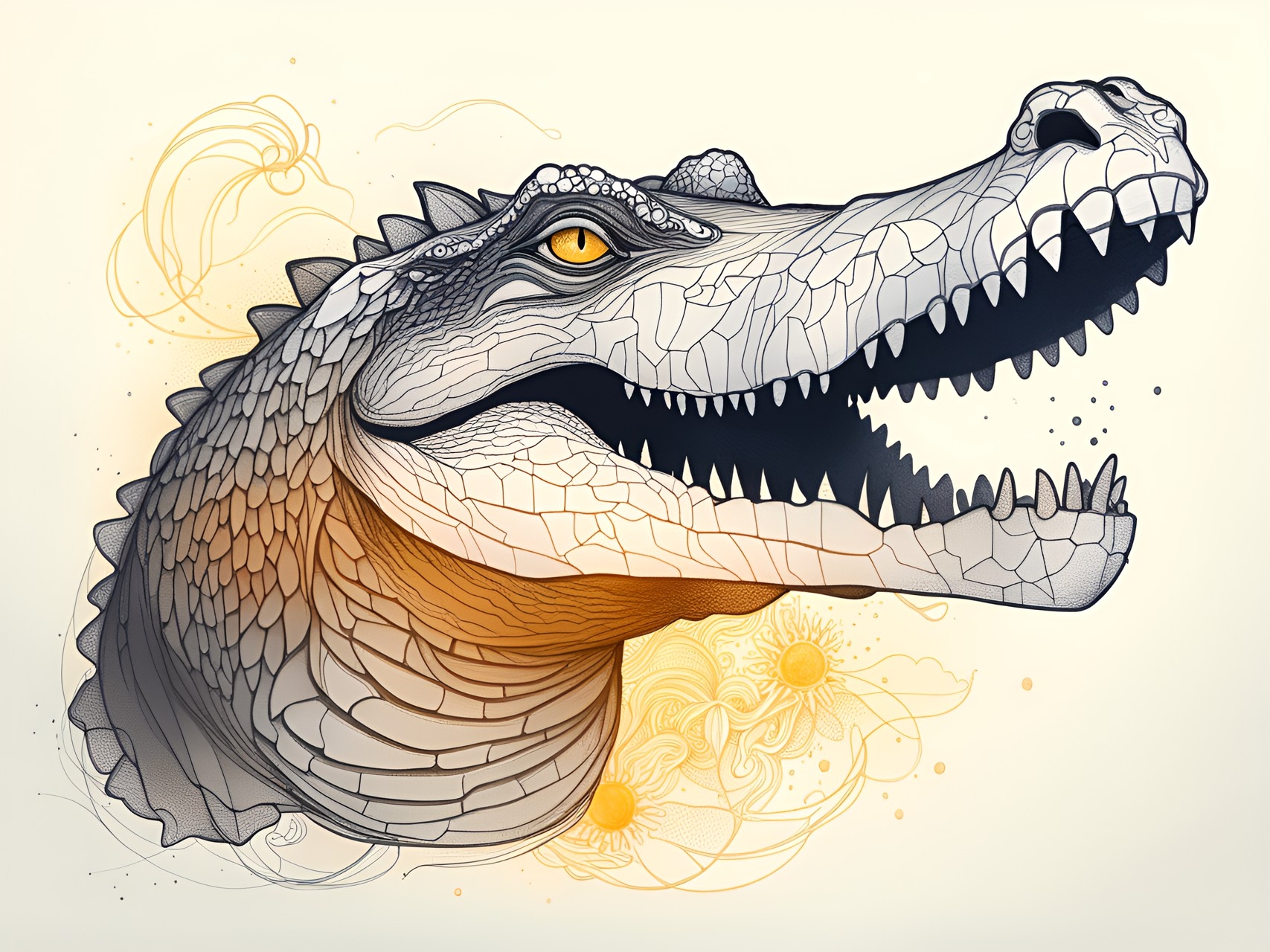
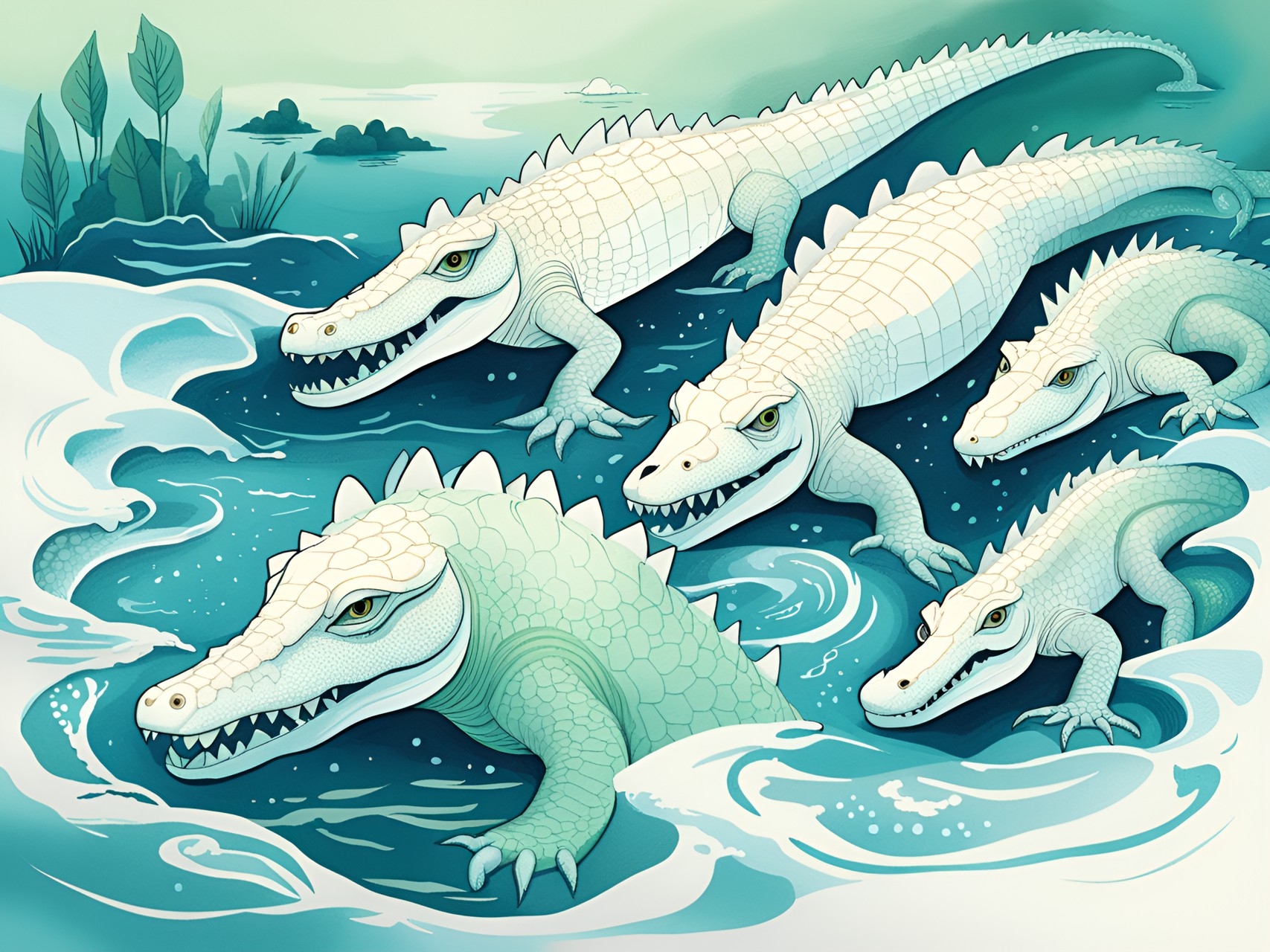
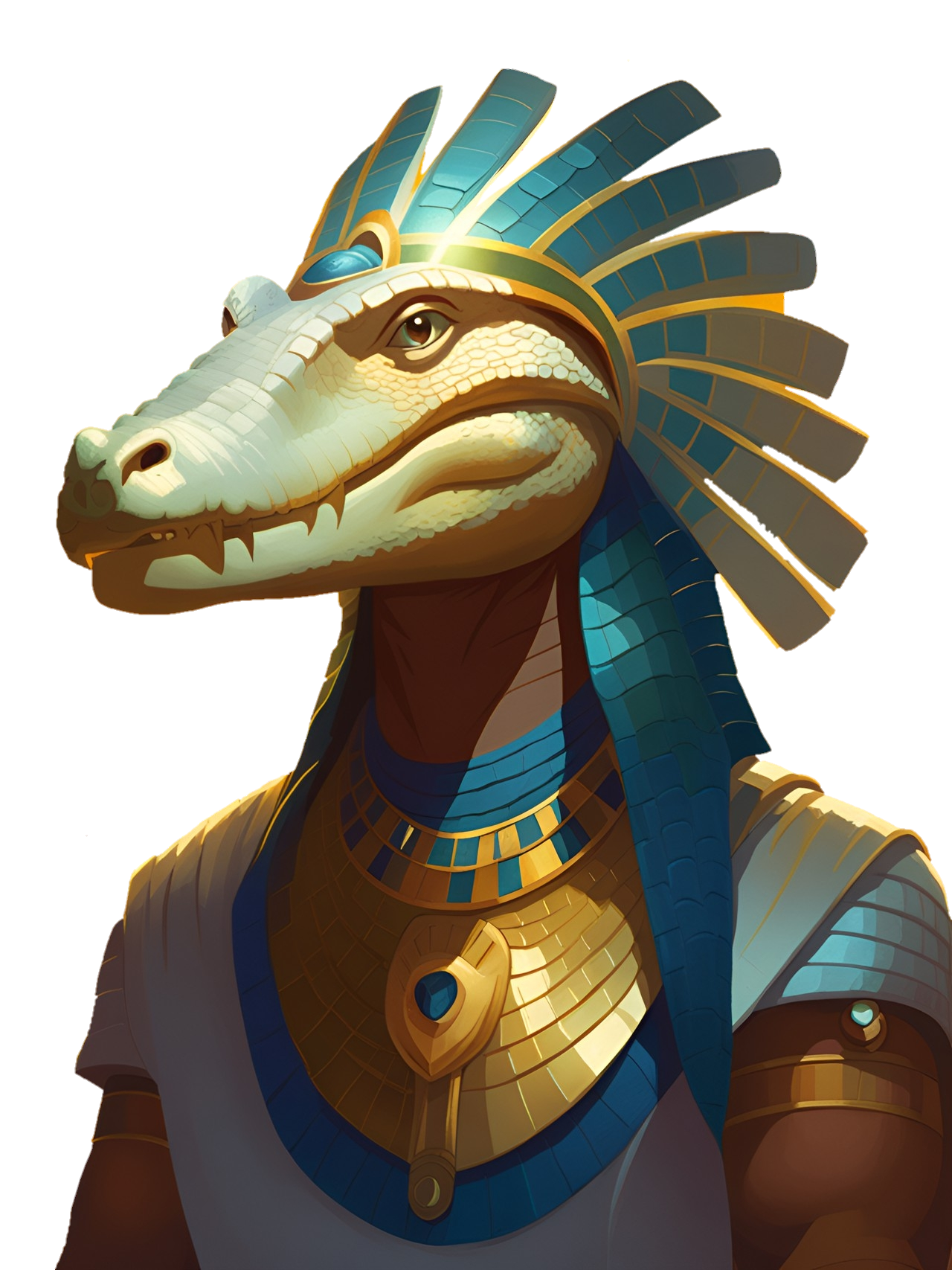


Comments